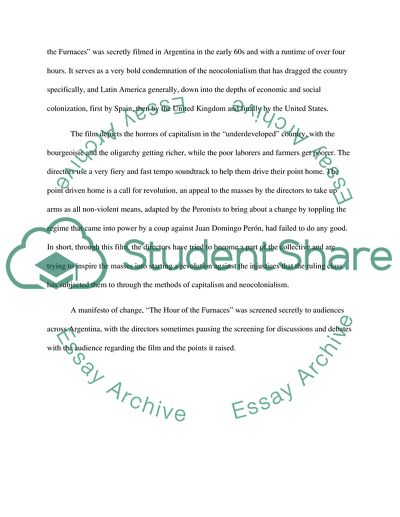Latin America Cinema (Hour of Furnace and Third Cinema) Essay. Retrieved from https://studentshare.org/miscellaneous/1563639-latin-america-cinema-hour-of-furnace-and-third-cinema
Latin America Cinema (Hour of Furnace and Third Cinema) Essay. https://studentshare.org/miscellaneous/1563639-latin-america-cinema-hour-of-furnace-and-third-cinema.


